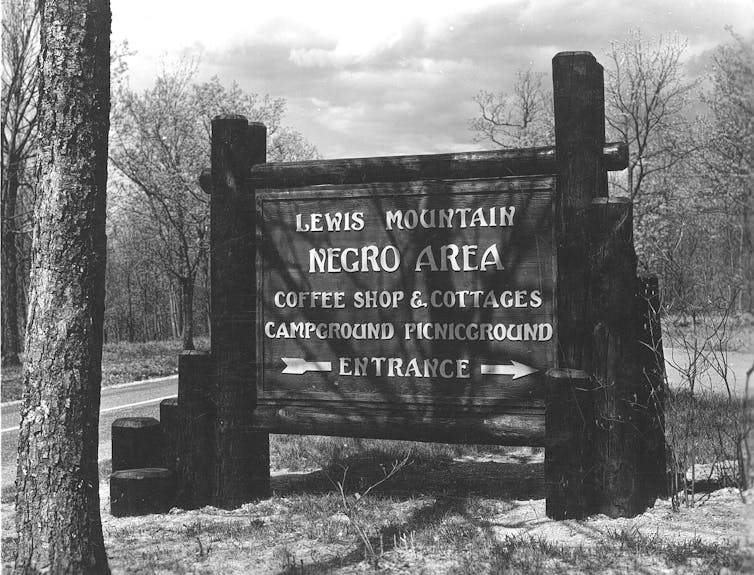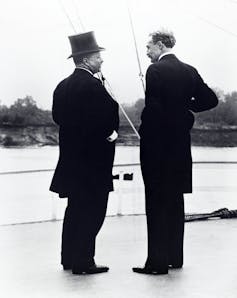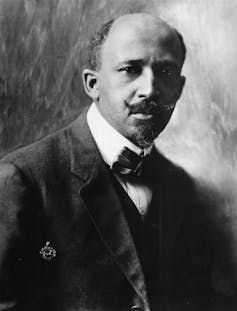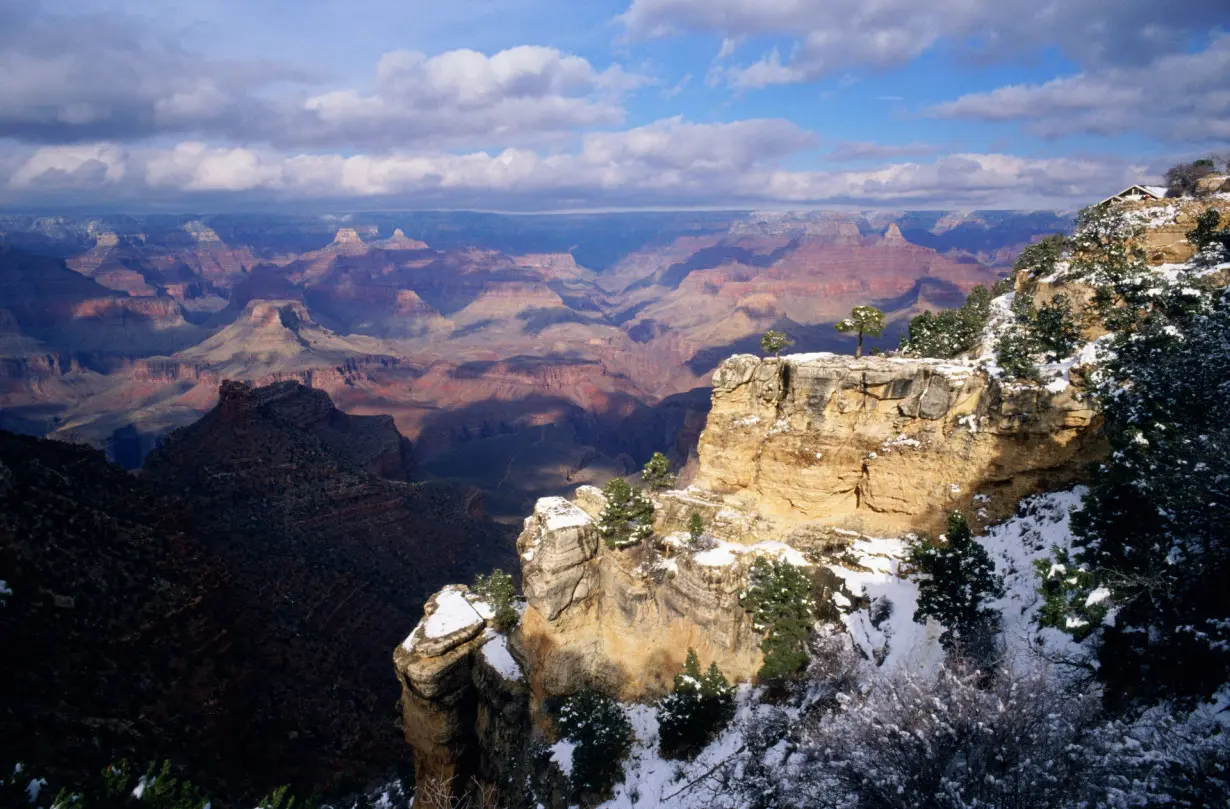In his collection of essays and poems published in 1920 titled “Darkwater,” W.E.B. Du Bois wrote about his poignant encounter with the beauty of the Grand Canyon, the stupendous chasm in Arizona.
As he stood at the canyon’s rim, the towering intellectual and civil rights activist described the sight that spread before his eyes. The Grand Canyon’s “grandeur is too serene – its beauty too divine!” Du Bois wrote. “Behold this mauve and purple mocking of time and space! See yonder peak! No human foot has trod it. Into that blue shadow, only the eye of God has looked.”
But Du Bois’ experience undermined a widely held assumption that was reinforced by early conservationists like Theodore Roosevelt – that only white people could appreciate the landscapes of national parks. For Roosevelt and his progressive allies, saving nature was connected to saving the white race.
My research on the history of national parks shows that these racial assumptions and federal policies contributed to making the parks unwelcome places for Black nature enthusiasts such as Du Bois.
Du Bois traveled to national parks anyway, and he understood that most other Black people were unable to follow because of the cost and discrimination found at every turn. It still bothered Du Bois, however, that Black people were unable to experience a joy similar to what he found at what would later become Acadia National Park in Maine.
“Why do not those who are scarred in the world’s battle and hurt by its hardness travel to these places of beauty and drown themselves in the utter joy of life?” Du Bois asked.
The progressive politics of racial purity
President Theodore Roosevelt has been recognized as a “wilderness warrior” for his unprecedented protection of lands and wildlife. But his conservation record was tied to the belief of white racial superiority that was embodied in eugenics, the racist pseudoscience of the early 20th century that tried to determine who was fit or unfit to have children.

In this undated photograph taken between 1939 and 1950, the history of racial segregation at the Shenandoah National Park in Virginia is revealed.
One initiative of the Roosevelt administration was the creation of the National Conservation Commission on June 8, 1908. Though Congress eliminated the commission’s budget after six months, its task was to take an inventory of all the nation’s natural resources and make recommendations on how best to protect them.
Gifford Pinchot, the president’s most trusted environmental adviser, served as the commission’s executive chairman and compiled its final report in February 1909.
It offered 10 far-reaching recommendations on topics as diverse as public health to labor regulation and the elimination of poverty and crime. The 10th recommendation advocated for “eugenics, or hygiene for future generations” that connected federal conservation to white supremacy.
Pinchot’s report called for the forced sterilization of “degenerates generally” – namely, most immigrants, Black and Indigenous people, poor whites and people with disabilities. It also sought to increase the breeding of what they believed to be racially superior races, such as white Anglo Saxons and people of Scandinavian heritage.

President Theodore Roosevelt, left, and Chief Forester Gifford Pinchot aboard a steamship on the Mississippi River, in October 1907.
“The problem of the conservation of our natural resources is therefore not a series of independent problems, but a coherent, all-embracing whole,” the report concluded. “If our nation cares to make any provision for its grandchildren and its grandchildren’s grandchildren, this provision must include conservation in all its branches – but above all, the conservation of the racial stock itself.”
Another of Roosevelt’s close associates took an even more pointed approach to white supremacy and conservation.
Madison Grant had worked with Roosevelt since the 1890s and was an avid conservationist. He was also the author of an influential book on eugenics, “The Passing of the Great Race,” a racist tome arguing the superiority of what he called the “Nordic race.”
New agency, same philosophy
The election in 1912 of President Woodrow Wilson saw the implementation of discriminatory policies.
According to historian Eric S. Yellin, Wilson’s administration was “loaded with white supremacists” who effectively enacted harsh anti-Black policies in the federal government.
In 1913, for instance, Wilson ordered the federal workforce to be racially segregated, first at the U.S. Post Office, where most Black federal employees worked, and then at the Treasury Department, which had the second-largest number of Black workers.
The Wilson administration also created the National Park Service, the federal agency in charge of managing and interpreting the country’s national parks, when Wilson signed the Organic Act in 1916.
Not surprisingly, this new park service had the same racial policies of the Wilson administration and abided by local laws on racial segregation. That meant Black nature enthusiasts would continue to be prohibited in national parks in most of the former Confederate South.
My research has shown that the National Park Service catered exclusively to the expectations and needs of white visitors and it had very few Black employees or visitors. The policies included racially segregated dining rooms, picnic grounds and restrooms. Maps and signs in some parks directed Black visitors away from whites and to designated Black sections of the parks.
The official policy didn’t end until 1945, when U.S. Interior Secretary Harold Ickes outlawed segregation at national parks. But local segregation remained in practice in most Southern states for decades and still excluded Black visitors.
National parks as worth the struggle
Du Bois was willing to endure the racist laws that made traveling unpleasant for Black people seeking to find joy in natural beauty.
“Did you ever see a ‘Jim-Crow’ waiting-room?” Du Bois wrote in “Darkwater,” referring to the system of laws and social customs that disenfranchised Black people.

Black intellectual W.E.B. Du Bois on Jan. 1, 1918.
“Usually there is no heat in winter and no air in summer. To buy a ticket is torture; you stand and stand and wait and wait until every white person at the ‘other window’ is waited on,” he explained. “Then the tired agent yells across, because all the tickets and money are over there.”
For Du Bois, the struggle was worth the experience of the Grand Canyon.
“There can be nothing like it,” Du Bois wrote. “It is the earth and sky gone stark and raving mad… It is human – some mighty drama unseen, unheard, is playing there its tragedies or mocking comedy, and the laugh of endless years is shrieking onward from peak to peak, unheard, unechoed, and unknown.”
The sight of the Grand Canyon, Du Bois concluded, “will live eternal in my soul.”
The same view has had the same effect on generations of visitors – Black, white and of countless other backgrounds – ever since.

Thomas S. Bremer has conducted historical research for the National Park Service as a consultant at the Lincoln Home National Historic Site in Springfield, Illinois.
Source: The Conversation

 Trump has begun another trade war. Here's a timeline of how we got here
Trump has begun another trade war. Here's a timeline of how we got here
 Canada's leader laments lost friendship with US in town that sheltered stranded Americans after 9/11
Canada's leader laments lost friendship with US in town that sheltered stranded Americans after 9/11
 Chinese EV giant BYD's fourth-quarter profit leaps 73%
Chinese EV giant BYD's fourth-quarter profit leaps 73%
 You're an American in another land? Prepare to talk about the why and how of Trump 2.0
You're an American in another land? Prepare to talk about the why and how of Trump 2.0
 Chalk talk: Star power, top teams and No. 5 seeds headline the women's March Madness Sweet 16
Chalk talk: Star power, top teams and No. 5 seeds headline the women's March Madness Sweet 16
 Purdue returns to Sweet 16 with 76-62 win over McNeese in March Madness
Purdue returns to Sweet 16 with 76-62 win over McNeese in March Madness








